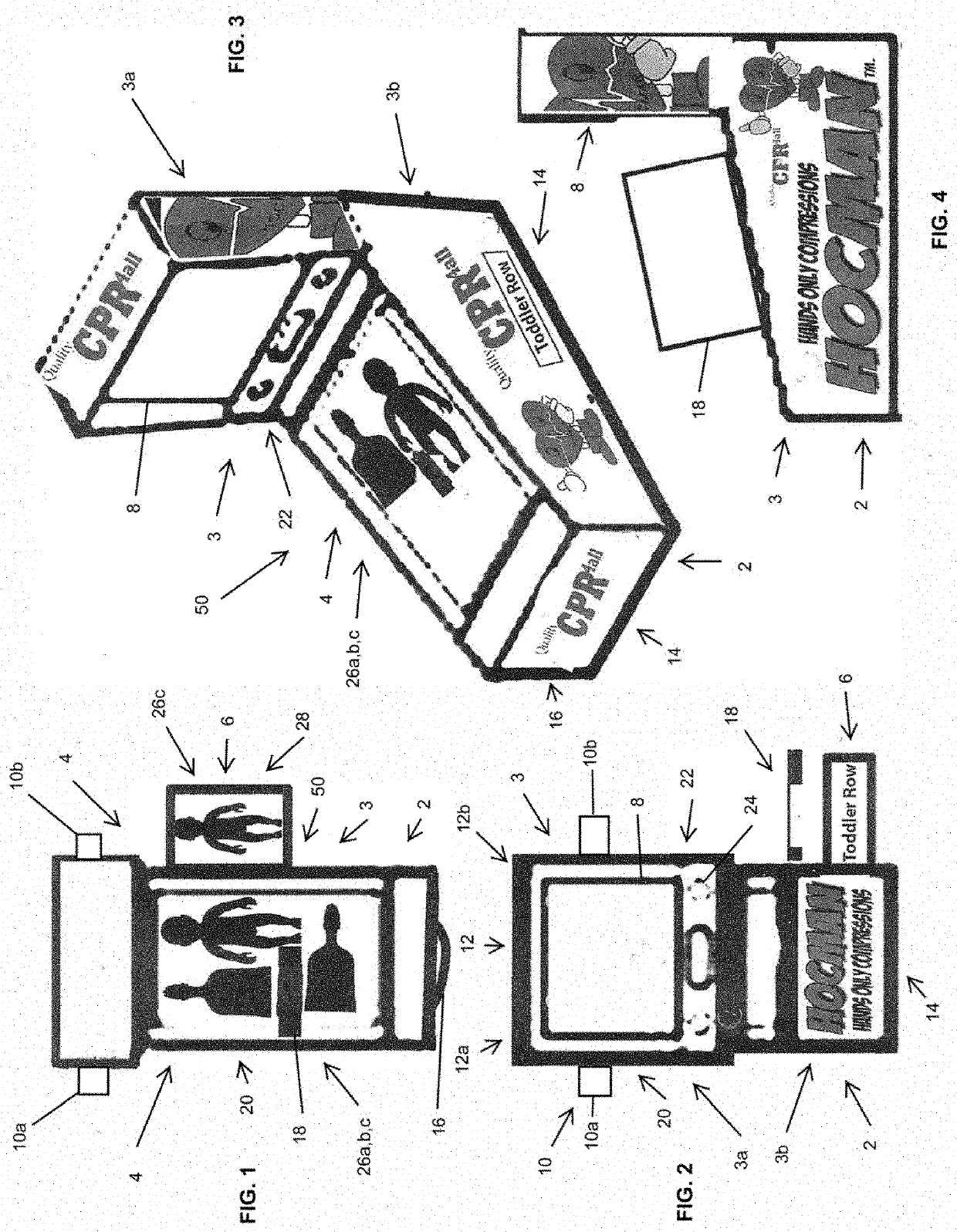Mobile cardiopulmonary resuscitation training system and methods of making and using same
a training system and a technology of applied in the field of mobile cardiopulmonary resuscitation training system and making and using same, can solve the problems of increased training costs, under-utilization of child training mannequins, and inability to train with child mannequins, so as to avoid floor training, improve cpr training, and facilitate use.
- Summary
- Abstract
- Description
- Claims
- Application Information
AI Technical Summary
Benefits of technology
Problems solved by technology
Method used
Image
Examples
Embodiment Construction
[0030]In order to address the shortcomings of the prior, known cardiopulmonary resuscitation (CPR) / automatic external defibrillator (AED) training systems, it would be desirable to utilize an improved, all-in-one, mobile, cardiopulmonary resuscitation (CPR) training system. The CPR training system is capable of providing practical, hands on CPR training using blended (synchronous and asynchronous) learning models. Furthermore, the CPR / AED training system includes emergency response training with educational updates. Finally, the CPR / AED training system station can include automatic external defibrillator (AED) training and a sanitizing station.
[0031]Reference is made now to FIGS. 1-4, where there is illustrated a mobile, cardiopulmonary resuscitation (CPR) / automatic external defibrillator (AED) training system 2, wherein the mobile, cardiopulmonary resuscitation (CPR) / automatic external defibrillator (AED) training system 2 includes, in part, cabinet 3, embedded monitored mannequin ...
PUM
 Login to View More
Login to View More Abstract
Description
Claims
Application Information
 Login to View More
Login to View More - R&D
- Intellectual Property
- Life Sciences
- Materials
- Tech Scout
- Unparalleled Data Quality
- Higher Quality Content
- 60% Fewer Hallucinations
Browse by: Latest US Patents, China's latest patents, Technical Efficacy Thesaurus, Application Domain, Technology Topic, Popular Technical Reports.
© 2025 PatSnap. All rights reserved.Legal|Privacy policy|Modern Slavery Act Transparency Statement|Sitemap|About US| Contact US: help@patsnap.com

